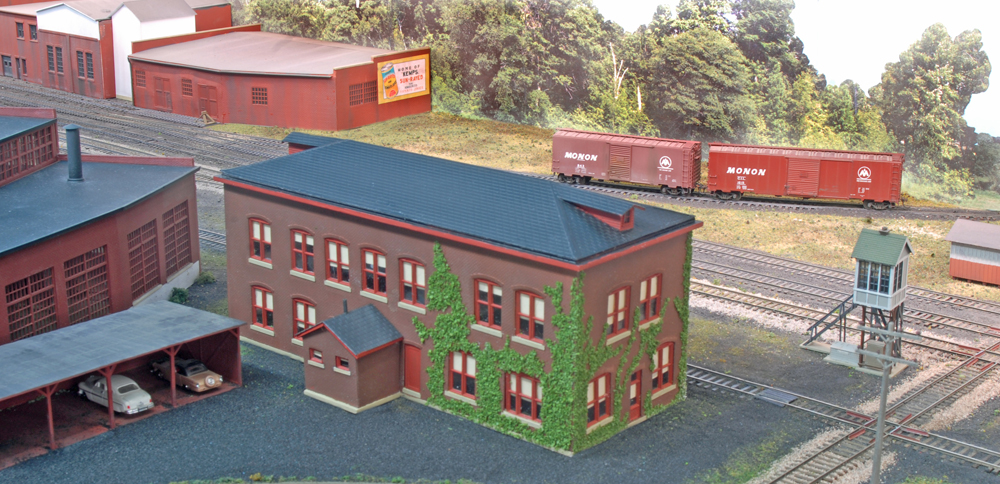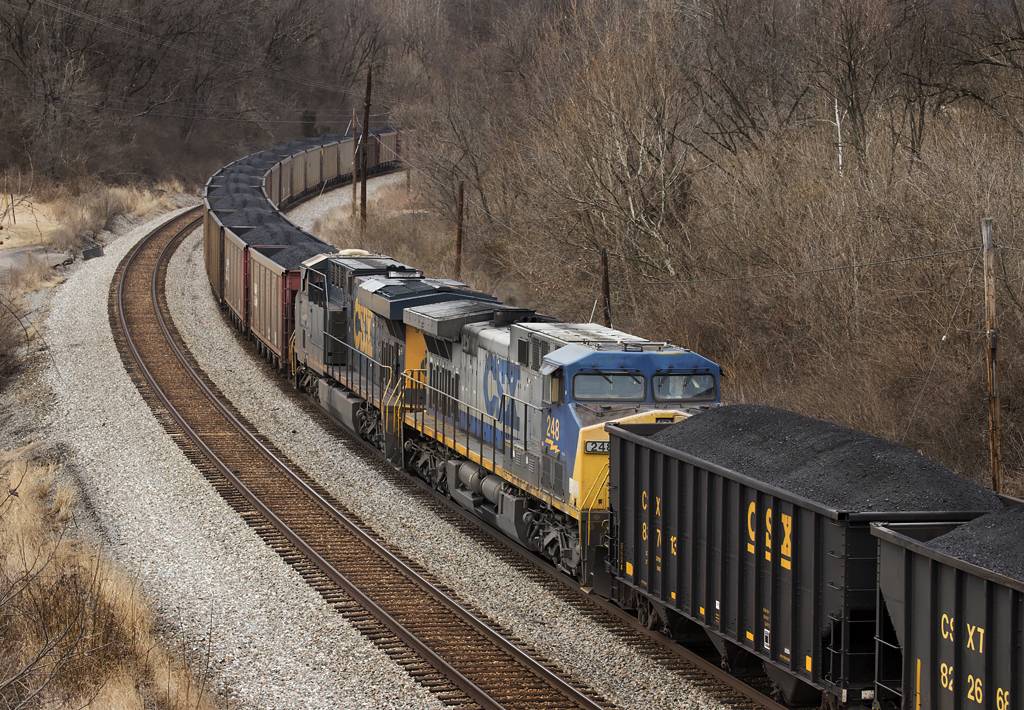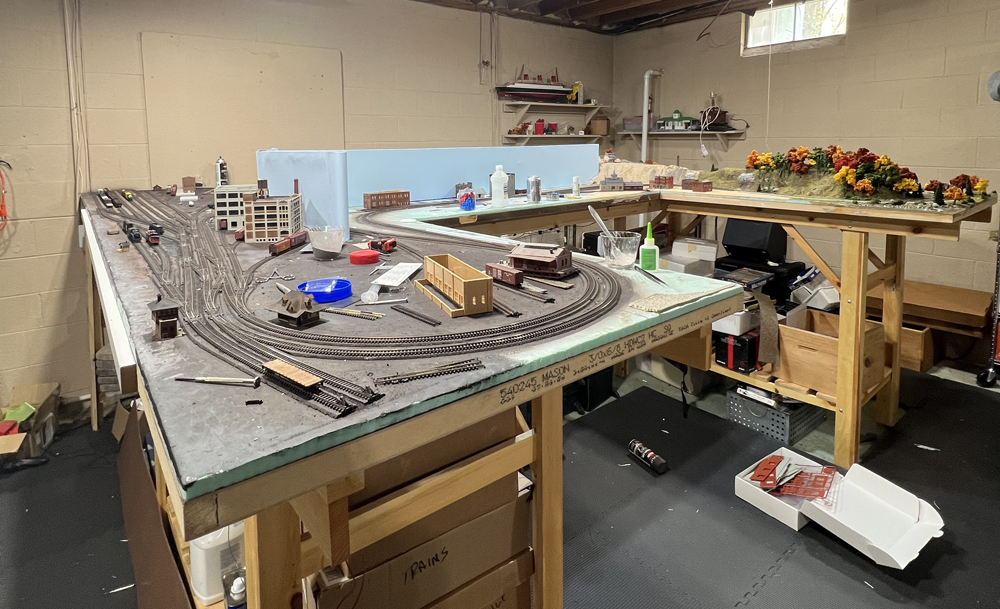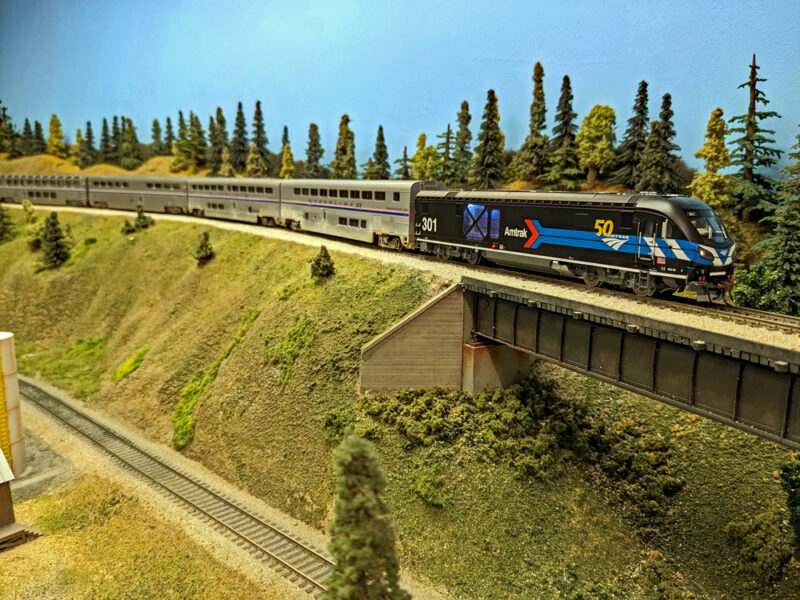Lionel no. 2460 crane car
During the prewar decades, crane cars became one of the hallmarks of the Lionel roster, with the No. 500 derrick car added to the 2 7/8-inch gauge roster in 1903. However, the Standard gauge line that followed did not boast a crane until the No. 219 made its debut in 1926. And the first O gauge model appeared only in 1930 with the No. 810. Once in the catalog, though, these items became stalwarts.
Interestingly, no other toy train maker countered with a crane car during this time. Ives never had one, although after the firm declared bankruptcy in 1928 and Lionel gained control it issued a 219 under the Ives name. American Flyer Manufacturing Co. did not broaden its Wide or O gauge lines with a crane car.
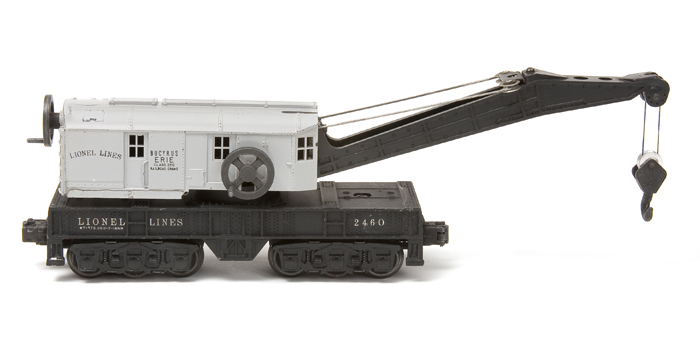
Not until 1939, after Gilbert had bought the assets of American Flyer, did someone challenge Lionel. The No. 514 O gauge wrecker car paved the way with its die-cast metal frame and brightly painted sheet-metal parts. Two years later came the No. 481 wrecker crane, which substituted a sheet-metal frame.
Better times after the war
The situation changed dramatically – and beneficially, as far as modelers were concerned – once train production resumed in 1945. Lionel hustled to revive one of its three O gauge crane cars, now equipped with knuckle couplers. The toy-like No. 2560 lasted through 1947 – always in the shadow cast by the No. 2460.
The bigger and stronger 2460 flexed its muscles over an 8 3/8-inch-long die-cast metal frame and deluxe six-wheel trucks like those used on Lionel’s top-of-the-line heavyweight passenger cars and tenders. These features made it sturdier and better able to handle loads than could the delicate 7½-inch-long 2560.
Lionel’s growing reliance on injection-molded plastics raised the 2460 to a high level of realism. The neatly detailed cab, painted light or dark gray in 1946 to stand out from the black-painted frame, had black heat-stamped markings. As impressive was the hefty boom, which Lionel based on a Bucyrus Erie prototype.
No debate that the 2460 crane car earns applause for its appearance and innovation. But what mattered most was its performance. This baby could do it all, thanks to a rotating cab, a functioning boom and hook, and die-cast metal cranks inserted into the end and side of the cab (all newly designed parts).
Lionel switched to a black-painted cab with white heat-stamped graphics, starting later in 1946 (this version is worth much less than a model with a gray cab). Other than minor changes to the markings, the 2460 stayed the same through 1950. Certainly, its ability to hoist fallen railcars never abated.
Lionel cataloged the No. 2460 crane car from 1946 through 1950.
Buyer’s checklist:
- Broken or cracked plastic cab and boom?
- Scratched or faded paint or lettering?
- Damaged or missing cranks and hook?
- Frayed original white cord?
- Functioning coil knuckle couplers?






